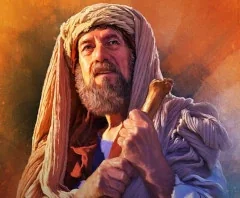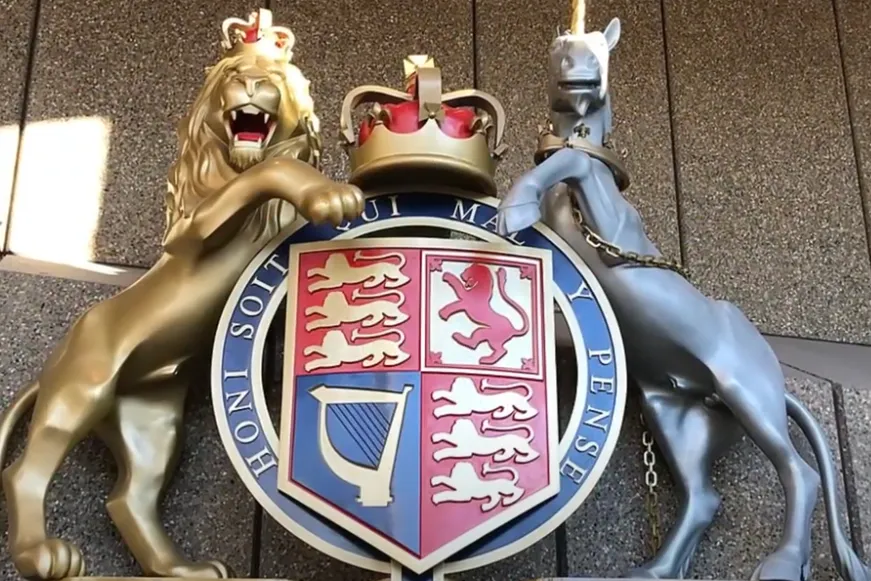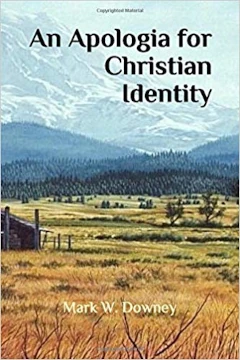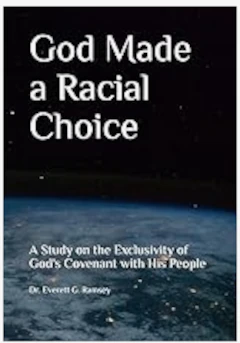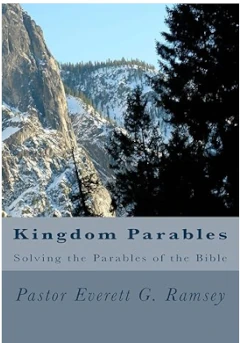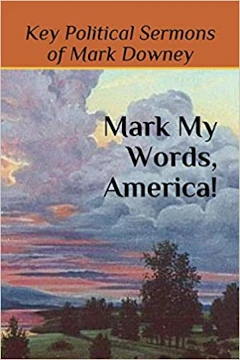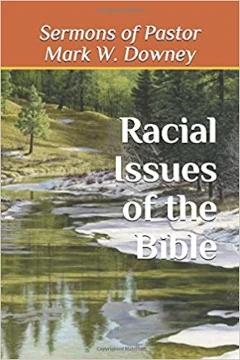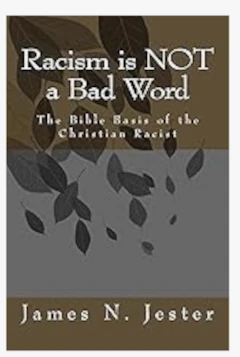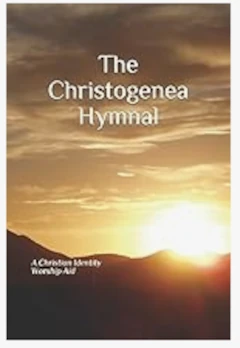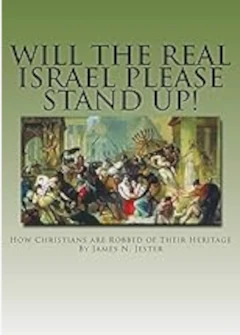A Sketch of Revival History
By Pastor Jim Jester
July 2, 2023
SCRIPTURE READING: Nehemiah 8:1-6, 8
And all the people gathered as one man into the square before the Water Gate; and they told Ezra the scribe to bring the book of the law of Moses which the LORD had given to Israel. 2 And Ezra the priest brought the law before the assembly, both men and women and all who could hear with understanding, on the first day of the seventh month. 3 And he read from it facing the square before the Water Gate from early morning until midday, in the presence of the men and the women and those who could understand; and the ears of all the people were attentive to the book of the law. 4 And Ezra the scribe stood on a wooden pulpit which they had made for the purpose… 5 And Ezra opened the book in the sight of all the people, for he was above all the people; and when he opened it all the people stood. 6 And Ezra blessed the LORD, the great God; and all the people answered, “Amen, Amen,” lifting up their hands; and they bowed their heads and worshiped the LORD with their faces to the ground. 8 And they read from the book, from the law of God, clearly; and they gave the sense, so that the people understood the reading. (RSV)
INTRODUCTION
In this passage the words understanding, understand and understood appear. The first two, according to context, likely mean that the people could audibly hear clear enough to understand. In the last “understood” (v 8) it means to comprehend because of the words “clearly” and “they gave the sense.”
Also in this passage we can see things that we do today when Christians meet for a worship service. Ezra stood on a “wooden pulpit” (a raised platform) so his voice would reach greater distances by not being obstructed by the crowd. They did not have electrical amplification back then. Also, the people stood up for the reading of the words of God. We do that too; and we also say “Amen,” raise our hands (sometimes) and bow our heads (but not usually to the ground lying flat). More from this passage as we continue.
My opening thesis regarding a genuine spiritual revival is this. I see two prerequisites for true revival. 1) Revival is born out of truth; and 2) Revival is born among God’s people. True revival cannot be born out of false doctrine; and it cannot be born from non-covenant people. God only works within his covenant limitations; and since his covenant is clearly limited to the covenant people, then revival can only come through them. Therefore, in this sermon I will present evidence to prove this premise, while making comparisons between fake revival and real spiritual renewal.
But first, by definition, I want to clarify what we mean by the word “revival.”
Christian revivalism is increased spiritual interest or renewal in the life of a church congregation or society, with a local, national or global effect. This should be distinguished from the use of the term ‘revival’ to refer to an evangelistic meeting or series of meetings. Proponents view revivals as the restoration of the church itself to a vital and fervent relationship with God after a period of moral decline. (Wikipedia)
FAKE REVIVAL
Let us consider the spurious or fake revival.
There was the report earlier this year of a revival at Asbury University in Wilmore, Kentucky. The alleged revival started in the chapel and lasted about 12 days before students returned to classes. It is an independently owned seminary founded by a Methodist pastor in 1888.
One Reformed theologian wrote about this event and made a good evaluation.
Holy FOMO?
Jeremy Walker, Feb. 21, 2023
It seems as if a lot of people are heading to Asbury. I have not been to Asbury. At this point, I do not anticipate going.
Why are they going to Asbury? In the last few days, something has taken place in the chapel of Asbury University. If the reports are anything to go by, a regular chapel service on a Wednesday morning has become a sort of rolling worship service. Revival, we are told, is happening at Asbury.
I think they may have holy FOMO. FOMO, as you may know, is the fear of missing out. It is a stressful state of being, involving a sort of constant apprehension—usually fueled in these days by a stream of online information and a flood of social media—that someone, somewhere, is enjoying something that you want or need, some event or experience that will make your life fundamentally better. It is understandable that genuine Christians, those who have longed for and prayed for the reviving of Christ ’s church, should hear of events in a place like Asbury and suffer a little holy FOMO. Notice the qualifying adjective! They are not seeking to be slaves to spectacle or entranced by mere experience, but they are eager for the Lord ’s favor. If that favor is being poured out, they have an appetite to be a part of things. If the Lord were genuinely reviving his people in a place, say, a hundred miles away, if there were a preacher whose ministry seemed to be attended by showers of heavenly blessing and he were speaking down the road, would you or I not have an appetite to be there, eagerly anticipating God ’s mercies toward us?…
Whatever is taking place in Asbury is being communicated and filtered by way of media that are not necessarily going to communicate accurately what is taking place, for good or ill. We see snippets and snapshots, some of which seem to suggest that this phenomenon is taking place entirely apart from any preaching and teaching, and that the revival seems to consist solely in an extended concert (which, in today ’s Christianity, is often considered to be synonymous with ‘worship ’ ). Others contain suggestions, if not testimonies, of people repenting of sin and drawing near to God. I have neither the energy nor the opportunity to filter through all these reports, trying to discern and determine what is valid and valuable and what is not.
How should I respond, to them and in my own heart?
Well, I have studied in small measure the history of revival, and know some of the dangers of revivalism. I have been present when some men have preached and I was persuaded that there was an unusual sense of heavenly reality, making my soul humble and hungry. I have also seen excesses and uglinesses which fill me with grief, and which are no more manifestations of the Holy Spirit ’s presence and power than a twitching corpse is evidence of real life.
I know the Lord is sovereign. I know he works in mercy and in grace. I therefore do not think that we have any right to tell the Lord where and when and whom he must bless. I cannot restrict the Holy Spirit ’s operations, but I can know how he operates. If charlatans or naysayers arrive where God is at work, I know they might quench the Spirit of God, but I also know that the Lord might be pleased to convince, convict and convert his elect. I know that the Lord uses weak and foolish instruments to accomplish his purposes, so I do not expect every man whom the Lord uses to be the finished article, either in doctrine or practice. I know that the primary means he uses to stir and sustain life in his saints and to bring life to the lost is the preaching of the Word, and so I wonder how much preaching and teaching is involved here.
…I know the work of the Spirit involves a profound and humbling sense of the presence of a holy God, a deep conviction of sin, a genuine newness of life, a committed pursuit of true godliness, and a sincere appetite for the worship of God; and I anticipate that these will be the present and lasting fruits of any genuine spiritual renewal.
The mere fact of long meetings for praise, or even prayer, or preaching do not a revival make! Are Christians being humbled and stirred before God; are unbelievers repenting and believing and manifesting transformed lives? The great theologian of revival, Jonathan Edwards, makes clear that it can take time to distinguish between a passing religious excitement and a genuine work of grace. The work will not suffer for righteous caution, but an excess of excitement and a mere appetite for experience may prove dangerous, as might also a sneering suspicion and ungrounded negativity.
I am wary of chasing the fire and turning events like these into some kind of spectacle. I would be grieved at the thought of the Lord drawing near and not taking an opportunity to draw near to him. So I do not need to live in the stressful state of FOMO, even a holy FOMO. I need not become slave to spectacle or entranced by mere experience. I need to be more eager for the Lord ’s glory than for the Lord ’s blessing, ready to rejoice if he is pleased to magnify his name, even if he does not magnify it where I might have hoped.
So I will not be going to Asbury because I do not need to go. I have a place to be and a work to do and a God to serve… I know that the Lord is not limited in what he can do and where. I know what he has promised, I know what I desire, and I know what he is both willing and able to do. And so, it will be better simply to serve as God has commanded, and to pray, “Lord, work here too!”
— [End of Article]
I agree with the writer. He was very gracious; perhaps more than I would be.
As soon as I was made aware of this event it stirred my attention, because I knew of someone who went to Asbury many years ago. The seminary in Wilmore, Kentucky is a sister school (in historical founding) of God’s Bible School and College in Cincinnati, Ohio, where I attended for about five years. I immediately checked a few YouTube videos of what was happening in the chapel there. I soon found out that on the first day of this continuing event, the chapel service was led by a black man and his praise team; he gave a devotional message and they sang. They used contemporary choruses and many acted pentecostal-like (bouncing with the music), with one fellow commenting about the Apostle Paul “speaking in tongues.” This came up because this also took place on other occasions at the school during its history. The well-known Azusa Street revival in California was similar.
I ask, how can a true spiritual revival take place with non-covenant people ministering to the assembly? Also, this school has forsaken its early Methodist traditions of the founder. It seems that Asbury seminary has had a pentecostal takeover. There were present: Episcopal (Virginia), Baptist (Ohio), Church of God (Cleveland, Tennessee), etc.; so they were ecumenical. I wonder how many were there who teach that the law has been abolished. Isn’t this a lot like the “strange fire,” of Leviticus? “And Nadab and Abihu, the sons of Aaron, took their vessels and put fire in them and perfume, burning strange fire before the Lord, which he had not given them orders to do. And fire came out from before the Lord, burning them up and causing their destruction before the Lord.” (Lev. 10:1-2, BBE) The judeo-Christian church is treading very dangerous ground.
SECOND GREAT AWAKENING (early 1800s)
I see the Second Great Awakening as being a spurious revival rather than a true one. There are a number of reasons to believe this, the foremost being the leader of the movement.
Charles Grandison Finney (August 29, 1792 – August 16, 1875) was an American Presbyterian minister and leader in the Second Great Awakening in the United States. Finney rejected much of traditional Reformed theology, teaching that people have complete free will to choose salvation.
Finney was best known as a passionate revivalist preacher from 1825 to 1835 in upstate New York and Manhattan, an opponent of Old School Presbyterian theology.
His religious views led him, together with several other evangelical leaders, to promote social reforms, such as abolitionism and equal education for women and African Americans. From 1835 he taught at Oberlin College of Ohio, which accepted students without regard to race or sex. He served as its second president from 1851 to 1865, and its faculty and students were activists for abolitionism, the Underground Railroad, and universal education. (Wikipedia. Emphasis mine.)
Now let us consider some characteristics of true spiritual renewal.
REAL REVIVAL
Revival usually follows wicked periods in history. For example, at the Tower of Babel (Genesis 11), the “sons of men” (v 5) had exalted themselves above God and attempted to make their unity permanent by building a city. But Yahweh intervenes by confusing their language in order for them to scatter throughout the earth. The Almighty God was against interracial unity.
Then what follows in this chapter are the genealogies of Shem and Terah, God’s chosen racial lines. Terah’s family was from Ur of the Chaldeans. After Terah’s son had died, the family moved to Canaan and named their settlement after their son, Haran. After Terah died in Haran, God’s call came to Terah’s son, Abram.
Get thee out of thy country, and from thy kindred, and from thy father’s house, unto a land that I will shew thee: 2 And I will make of thee a great nation, and I will bless thee, and make thy name great; and thou shalt be a blessing. (Gen. 12:1-2)
God started with a particular man of a particular family to be “a blessing,” that is, a new beginning, a spiritual renewal (revival).
REVIVAL AFTER CAPTIVITY
Then there was the revival after the Babylonian captivity recorded in Nehemiah, beginning at chapter eight (our Scripture reading) and beyond. So let us examine some of the characteristics of this glorious event. The services consisted of:
Expounding the Word of God;
And they read in the Scroll, in the Law of God, explaining—so as to give the meaning. (Neh. 8:8, LSV)
Reading the Law of God;
And day by day, from the first day to the last day, he read from the book of the law of God. (Neh. 8:18, RSV)
On that day they read from the book of Moses in the hearing of the people; and in it was found written that no Ammonite or Moabite should ever enter the assembly of God; 3 When the people heard the law, they separated from Israel all those of foreign descent. (Neh. 13:1, 3, RSV)
Prayer/Confession;
And the Israelites separated themselves from all foreigners, and stood and confessed their sins and the iniquities of their fathers. (Neh. 9:2, RSV)
Praise/Thanksgiving;
…Stand up and bless the LORD your God from everlasting to everlasting. Blessed be thy glorious name which is exalted above all blessing and praise. (Neh. 9:5)
Most modern churches today have no problem with this last category of praise. In fact, they excel in it. Pentecostal churches especially are experts at turning forms of praise into musical entertainment and showmanship. Besides this problem, they lack in the other areas shown above: prayer, reading and expounding the word of God. They are spiritually off balance in their worship.
Real revival is born out of the truth found in God’s word; specifically this includes the law of God. Yet, most churches today reject the law of God by saying “it is done away with.” Most churches also reject the racial implications found in the law. They allow any racial mix into their fellowship, including the jew; of whom they gasp in awe when one comes into their presence. How can this type of thinking and practice result in a true revival? It cannot.
Just imagine if the Pentecostal churches would, all of a sudden, abide by these principles from Nehemiah. Their attendance would be cut in half. In most of these churches, women rule the roost and play prominent roles. Many of them would be among the first to leave. And, in some of these churches there are more dark races present than there are Israelites. These churches speak much of “revival,” but know nothing of true spiritual renewal.
True revival results in the adherence to God’s laws and principles:
A separation covenant;
“Now therefore let us make a covenant with our God to put away all the wives, and such as are born of them…” (Ezra 10:3) The same results happened under Nehemiah’s later reform; “When they had heard the law, they separated from Israel all the mixed multitude.” (Neh. 13:3)
A great awakening;
And the ears of all the people were attentive unto the book of the law. (Neh. 8:3)
A sealed covenant;
Because of all this we make a firm covenant and write it, and our princes, our Levites, and our priests set their seal to it. (Neh. 9:38)
HEZEKIAH’S REFORM
Then there was the reform under King Hezekiah, who, “Did what was right in the sight of the Lord, according to all that his father David had done.” (II Ki. 18:3) Hezekiah’s reign is recorded starting in II Kings 18 and II Chronicles 29. Both accounts tell us different things about his reign. The Kings account covers mostly later events: Shalmaneser’s siege of Samaria, Sennacherib’s capture of the fortified cities of Judah, Hezekiah’s seeking God’s help, and his illness and recovery. The Chronicles account covers earlier events: the physical restoration of the temple, its worship, various offerings, the tithe and the prosperity of Judah (plenty of food), and the destruction of the high places; and then it goes into the Assyrian invasion of Judah, and the final days of King Hezekiah.
And so, for the purpose of this sermon on revival, we want to take a closer look at the Chronicles account because it covers the restoration of temple worship. This part still relates to us today. Please note, that after the Passover (Feast of Unleavened Bread) was observed twice (See II Chr. 30:23), the children of Israel went out “…and brake the images in pieces, and cut down the groves, and threw down the high places and the altars out of all Judah and Benjamin, in Ephraim also and Manasseh, until they had utterly destroyed them all.” (II Chr. 31:1) This was one of the benefits of a revival. The children of Israel understood one of their God’s laws, that of separation from those children not of God, including the symbols of their pagan worship.
But let us go on to see some of the other benefits of a spiritual renewal.
II Chronicles chapter 29 tells us that King Hezekiah, in his first year, restored worship in the temple. But first, the temple had to be cleaned up for it had fallen into disrepair having not been used for such a long time.
He in the first year of his reign, in the first month, opened the doors of the house of the LORD, and repaired them. 4 And he brought in the priests and the Levites, and gathered them together into the east street, 5 And said unto them, Hear me, ye Levites, sanctify now yourselves, and sanctify the house of the LORD God of your fathers, and carry forth the filthiness out of the holy place. (II Chr. 29:3-5)
Hezekiah also explained to them why this had taken place: that our fathers had forsaken the Lord, done evil in His sight, and closed the temple. He concludes, “For, lo, our fathers have fallen by the sword, and our sons and our daughters and our wives are in captivity for this.” (II Chr. 29:9)
Next, King Hezekiah says this:
Now it is in mine heart to make a covenant with the LORD God of Israel, that his fierce wrath may turn away from us. My sons, be not now negligent: for the LORD hath chosen you to stand before him, to serve him, and that ye should minister unto him, and burn incense. (II Chr. 29:10-11)
And, of course, all the commands of Hezekiah were joyfully carried out to the letter. Now that everything was cleaned up and ready; chapter 29 continues:
20 Then Hezekiah the king rose early, and gathered the rulers of the city, and went up to the house of the LORD. 21 And they brought seven bullocks, and seven rams, and seven lambs, and seven he goats, for a sin offering for the kingdom, and for the sanctuary, and for Judah. And he commanded the priests the sons of Aaron to offer them on the altar of the LORD. 22 So they killed the bullocks, and the priests received the blood, and sprinkled it on the altar: likewise, when they had killed the rams, they sprinkled the blood upon the altar: they killed also the lambs, and they sprinkled the blood upon the altar. 23 And they brought forth the he goats for the sin offering before the king and the congregation; and they laid their hands upon them: 24 And the priests killed them, and they made reconciliation with their blood upon the altar, to make an atonement for all Israel: for the king commanded that the burnt offering and the sin offering should be made for all Israel. (II Chr. 29:20-24)
Four times we see the phrase, “sprinkled the blood on the altar.” It is a reminder of that dreadful lost condition; and the extreme cost of redemption! And who was this vast atonement for? All of Israel (including Judah); no one else. Yet, the New Testament tells us, “For it is impossible that the blood of bulls and goats should take away sins.” (Heb. 10:4, RSV) And Peter adds, “…But with the precious blood of Christ, like that of a lamb without blemish or spot.” (I Pet. 1:19, RSV)
What else did the king do?
27 And Hezekiah commanded to offer the burnt offering upon the altar. And when the burnt offering began, the song of the LORD began also with the trumpets, and with the instruments ordained by David king of Israel. 28 And all the congregation worshipped, and the singers sang, and the trumpeters sounded: and all this continued until the burnt offering was finished. 29 And when they had made an end of offering, the king and all that were present with him bowed themselves, and worshipped. (II Chr. 29:27-29)
These were offerings of devotion and fellowship with God.
Furthermore, they brought thank offerings into God’s house. Hezekiah said,
Now ye have consecrated yourselves unto the LORD, come near and bring sacrifices and thank offerings into the house of the LORD. And the congregation brought in sacrifices and thank offerings; and as many as were of a free heart burnt offerings. (II Chr. 29:31)
And there were so many offerings that the priests needed help from the Levites to skin all of the animals.
Thus this chapter ends with the words: “So the service of the house of the LORD was set in order. 36 And Hezekiah rejoiced, and all the people, that God had prepared the people: for the thing was done suddenly.” (II Chr. 29:35b-36) This word “suddenly” reminds us of the book of Acts, which also is in the context of revival. “And suddenly there came a sound from heaven as of a rushing mighty wind, and it filled all the house where they were sitting.” (Acts 2:2)
FIRST GREAT AWAKENING (1730s - 1750s)
Most of the clergy involved in the revivals of the late 18th century “Great Awakening” were Methodist, Baptist, Presbyterian and Anglican. One such preacher (formerly Anglican) was,
Thomas Charles (14 Oct. 1755–5 Oct. 1814), was a Calvinistic Methodist clergyman of importance in the history of Wales.
Charles had been influenced by the great revival movement in Wales, and at the age of seventeen had been converted by a sermon of Daniel Rowland. This was enough to make him unpopular with many of the Welsh clergy, and being denied the privilege of preaching for nothing at two churches, he helped his old Oxford friend John Mayor, now vicar of Shawbury, Shropshire, from October until 11 January 1784. On 25 January he took charge of Llanymawddwy (14 miles from Bala), but was forced to leave after three months, because three influential people, including the rector of Bala, had persuaded his rector to dismiss him. His preaching, his catechizing of the children after evensong, and his connection with the Bala Methodists, his wife’s stepfather being a Methodist preacher, gave great offense. After a fortnight more at Shawbury, he wrote to John Newton and another clergyman friend in London for advice. The Church of England denied him employment, and the Methodists desired his services. His friends advised him to return to England, but it was too late. In September, accompanied by Henry Newman (his rector at Shepton Beauchamp and Sparkford), he went on a tour in Caernarfonshire. In December, he was preaching at the Bont Uchel Association; and he joined the Methodists in 1784. (Wikipedia)
Overall, the First Great Awakening built upon the older foundations of: Puritanism, Pietism and Presbyterianism. Within this context they were ecumenical, that is, they agreed upon the basics of Scripture. The main leaders of this revival were men such as George Whitefield, John Wesley and Jonathan Edwards. They articulated a theology of revival and salvation that transcended denominational boundaries and helped forge a common evangelical identity. Their outreach was mostly within their own race (that soon changed).The Revivalists added to the doctrines of the earlier Reformation an emphasis on the outpourings of the Holy Spirit. Extemporaneous preaching (a prepared sermon, but not the precise words) gave listeners a sense of deep personal conviction of their need of salvation in Christ; and it encouraged a commitment to a new standard of personal holiness. Revival theology stressed that conversion was not only an intellectual assent of correct Christian doctrine, but had to be a “new birth”(an inaccurate term, scripturally) experience from the heart. Revivalists also taught that the assurance of salvation was normal for the Christian life.
CONCLUSION
We have seen that true revival and spiritual renewal have taken place after times of great trouble and lost faith in the God of our fathers. It is my opinion that the First Great Awakening was a genuine revival (generally), being centered on scriptural truth being spread by great preaching. It focused on people who were already church members or attendees. It changed their rituals, piety and self-awareness. The Second Great Awakening lacked the foundation of scriptural truth; and thus became emotional based with dreams, visions, and other spiritual experiences or revelations. It began about 1800 and reached out to the unchurched. Out of this came many divisions which resulted in new denominations, some of which were a part of the Restoration Movement. Later came the Pentecostals; even later came the modern “night-club” churches and mega-churches.
Of importance to note on both of these events, is that the revivals occurred among the White folk. This was also true of the many Bible examples we have shown. It was within the second “Awakening” and beyond that racial mixtures began to appear in Christianity, along with spurious doctrines. This, of course, is rampant today and completely out of control. I assert that genuine spiritual revival only occurs among the covenant people and the truth.
Historically speaking, periods of revival are typical of Old Testament religion — the people of God had cycles in their faith, just as the song says, “sometimes I’m up, sometimes I’m down.” This is rooted at the personal level. But New Testament religion tends to depict our personal Christian experience as always “on fire,” filled with the Spirit, and “dwelling in Beulah land.” We should be living in the victorious New Testament religion because we now have the Comforter to abide in us, not just with us. Our people did not have this under the Old Covenant. Yet, in the reality of life, too many times we do not attain this level, even though we should. This is our own personal fault; for God is always faithful. So let us take advantage of this blessing of perpetual revival within our Christian life. One writer (Brother Lawrence) called this the “practice of the presence of God.” Pentecostals like to call it the “full gospel” or the “baptism of the Holy Spirit.” The old-timers, especially in Methodism, called it “sanctification.” But it doesn’t matter what you call it, just live in it every day as best you know how, with an eye to the glory of God.
Now — revival at the national level is another story altogether. Most of our people, being so busy making ends meet, will not dedicate themselves to the kingdom of God in a personal way. Unfortunately, it will take a terrible national event causing much suffering to convince them to turn their lives over to what the Lord wants in their life. They also are brainwashed with the all-inclusive doctrine of nominal Christianity; their only witness being those in Christian Identity who will speak the truth regarding race in the Bible.
You may have noticed that the revival after the captivity happened with the cooperation of both political and religious leadership. First of all, the Persian emperor, Cyrus, allowed the Judeans to return to their land. There was another return under Ezra about 15 years later and he led a reform. King Artaxerxes made Nehemiah the governor of Judah; and likewise, the revival under the leadership of King Hezekiah.
Could Trump become a Nehemiah, or a Hezekiah? Maybe I’m being far too optimistic! But God can turn someone around; He made a mule talk. Trump’s mother, Mary Anne, gave her son a Bible, which was gifted to her by her two aunts — the very same women who were the seeds of the Scottish revival. Donald J. Trump was sworn in on this revival Bible on January 20th, 2017, when he was 70 years, 7 months and 7 days old, in the Hebrew year 5-777.
What are the chances of this unusual happening (if true)? Is our God working? Is this Divine providence? Could the attempt to “get Trump” be the Deep State ’s last gasp of life-giving breath? Will America pay for her evil deeds in a horrible way? And, will she come out on top in the end?
Lord, grant your people revival and deliverance from those who oppress us.
Amen

